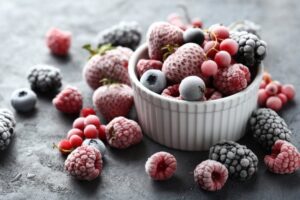
In 2022 LNZ Group agricultural holding produced 7 thousand tons of frozen berries, fruits and vegetables at its plant for frozen berries, vegetables and vegetables in Shpole (Cherkasy region). They are sold under TM Tevitta – raspberry, sweet corn, seedless cherry, pumpkin, elderberry, currant, blueberry etc.
According to the LNZ website, the Tevitta brand has a closed circle of production and performs all production processes on its own, from growing to direct sales of packaged products.
In particular, the nursery has grown 2 million seedlings of strawberry, 220 thousand of raspberry and blackberry and about 50 thousand of other cultures: dog rose, elderberry, currant and cherry. In addition, in 2022, the company planted two new nurseries for raspberries and strawberries, a nursery for nursery seedlings, and built nearly three dozen tunnels for growing berries on an area of more than 2 hectares.
“Despite the war, the Tevitta brand was able to ramp up production, storage and direct processing capacity. And while the brand was already in operation in 2021, it was 2022 that was the year to fully launch and operate. The brand combined seedling production, berry, vegetable and fruit freezing and market sales. That is, the full-scale military invasion of the Russian Federation, the company actually met at the stage of formation,” the company said.
In addition, in the fields Tevitta planted 60 hectares of land for growing different raw materials for processing – from strawberries to rose hips. The nursery works not only to meet its own needs, but also supplies seedlings to farmers who are engaged in industrial berry production.
“The company is pleased with the result: the plant in 2022 came out to almost 100% utilization. What’s more, it has expanded its export boundaries. Products have already reached the markets of France, Belgium, Germany, Estonia and England. In addition, in early 2023 frozen products of Tevitta brand can be found on the shelves of stores in Ukraine and other European countries”, – summed up the holding.
LNZ Group was established on the basis of Lebedinsky seed plant. It specializes in selling corn, sunflower, wheat and barley seeds, as well as growing agricultural products and livestock. The group cultivates 70 thousand hectares of land, the number of cattle is about 6 thousand heads.
LNZ Group owns two elevator complexes in Sumy and Kirovograd regions with total storage capacity of 170 thousand tons of grain, and also has its own fleet of cars.
In the unified state register of legal entities and individuals the ultimate beneficiary of PJSC Lebedinsky seed plant (Cherkasy region) is Dmytro Kravchenko.
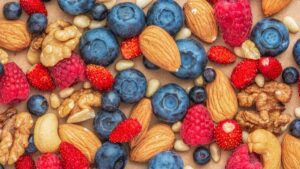
Ukraine in January-August 2022 imported fruits and nuts for a total of $398 million, which is 16% less than in the same period in 2021, according to the website of the National Research Center “Institute of Agrarian Economics” (IAE) on Friday.
At the same time, deliveries to Ukraine of products of the “fruits and nuts” commodity group accounted for the largest share among other types of agricultural products imported into Ukraine – 10%, mainly citrus fruits, bananas and exotic fruits were imported.
According to the IAE, Turkey has been the main supplier of fruits and nuts to Ukraine for more than 10 years, from which over 126 thousand tons of these products were imported during the eight months of this year. Its share in the cost of domestic fruit imports amounted to 27.1%.
Ukrainian companies also made significant purchases of fruits and nuts in Ecuador (15.3%), Egypt (6.8%), Greece (6.0%), Colombia (5.5%), Spain (4.9%) and Costa Rica (4.1%). Together, these seven countries formed almost 70% of the value of imports of this group of products to Ukraine.
“The greatest demand among fruit and berry products in our country is traditionally enjoyed by citrus fruits and bananas, which formed almost 3/5 of the value of imports in January-August 2022. If more than half of the volumes of citrus imports consistently belong to Turkey, then Ukraine purchases bananas mainly in countries Latin America, in particular in Ecuador, Colombia and Costa Rica, which this year provided 95% of the value of supplies,” said Bohdan Dukhnitsky, senior researcher at the Department of Economics, whose words are quoted in the message.
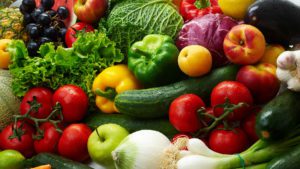
The export of vegetables, fruits, berries and nuts, fresh, frozen and dried brought Ukraine $339 million in revenue last year, which is 9.4% more than in 2018, and 20.1% more than in 2017. According to a Tuesday report on the website of the Ukrainian Horticultural Association, walnuts, berries and apples were the main product groups providing growth in the export of fruits and vegetables. The growth in revenue from apple exports over two years exceeded 150%, while exports of nuts and frozen berries grew by about 37% in two years.
At the same time, according to the association, the share of these three leading categories of the total export of fruits and vegetables continued to grow and reached 70% in 2019.
“The growth rate of export of fruits and vegetables from Ukraine remains high, but whether the country can keep them in 2020 is a big question, because there have been a number of negative trends, such as a strengthening of the national currency, a shortage of labor for harvesting products, a decrease in raspberry production, decrease in investments in new orchards and berry plants, and other things. At the same time, there is great hope that Ukraine will continue growing for some time thanks to the fruiting of orchards, nuts and berries laid over the past five years,” Economist at the investment department of the Food and Agriculture Organization of the United Nations (FAO) Andriy Yarmak said.
According to the association, Ukraine is not even among the top 50 world leaders in terms of fruit and vegetable exports.
“For example, Lithuania, with a climate not favorable for fruits and vegetables, exports more fruits and vegetables than the entire Ukraine. Poland exports $2.6 billion worth fruits and vegetables – eight times more than Ukraine. Moreover, this includes re-export of Ukrainian berries, and other products of the fruit and vegetable group,” the association said.
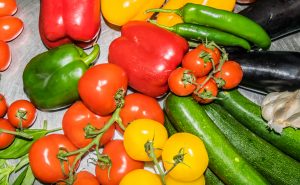
Adult Ukrainians consume almost half the amount of vegetables (174 grams versus the recommended 300 grams per day) and less than 30% of fruits and berries (83 grams versus 300 grams per day) compared with the recommendations for healthy eating for adults.
The relevant data are contained in the national study of the current nutritional structure of Ukrainians, which was conducted by the Ipsos international research company at the initiative of Danone in Ukraine.
The results of the study of food consumption in 2018-2019 showed that adults consume an excessive amount of flour products – 474 grams per day, at the same time, the level of consumption of dairy products is several times lower than recommended, as well as liquid (500 ml per day). Ukrainians consume extremely few legumes – 9 grams against the recommended 75 grams and only a quarter of the recommended amount of nuts and seeds – 8 grams against 30 grams.
According to the study, Ukrainians consume twice the recommended amount of salt – 9.7 grams compared to the recommended 5 grams of the World Health Organization (WHO). Men consume 17% more salt than women – 10.7 grams versus 8.9 grams.
The average adult sugar intake is 46 grams per day. Only about a quarter of the adult population adheres to recommendations for optimal sugar intake – less than 25 grams per day (25% of men and 23% of women). Some 40% of Ukrainians consume from 25 grams to 50 grams of sugar per day. A high level of sugar consumption – more than 50 grams per day is found for more than a third of the population (35%), of which 12% consume more than 75 grams of sugar per day.
The study involved 1,232 people aged 1 to 60 years. The examination of the study was provided by the Association of Dietitians of Ukraine.
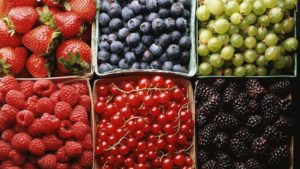
On Tuesday, July 9, at 10.00, the press center of the Interfax-Ukraine news agency will host a press conference entitled “Results of Exports of Fresh Fruits and Berries in 2018-2019. Forecast for Harvest (and Ukrainian Exports) for 2019-2020 Season.”
Participants: Dmytro Kroshka, the chairman of the Ukrainian Association of Agrarian Export, Volodymyr Hurzhiy, an expert for exports at First Ukrainian Apples Producers Aggregating Company USPA FRUIT, Oleksandr Yaschenko, the deputy director for research of the Institute of Horticulture, and Oleh Bosy, the agricultural technologist and managing partner of FruiTech (8/5a Reitarska Street). Registration of journalists requires press accreditation.
AGRARIAN, BERRIES, EXPORT, EXPORTS, FORECAST, FRUITS, HARVEST, PRESS CONFERENCE, RESULTS

Ukraine in 2018 exported $229 million worth of fruits and berries, which is 17% more than a year earlier.
According to the Ukrsadprom association, the main products in this group were walnuts, which were delivered for $117 million, frozen fruits and berries for $78 million, apples and pears worth $15 million. Their total share in exports of horticultural products was 92%.
According to Ukrsadprom, in 2018 exports of walnuts rose by 32%, to 41,000 tonnes, frozen fruits by 14%, to 48,000 tonnes, apples and pears by 79%, to 43,000 tonnes.
Apples of Ukrainian production were exported to 60 countries, the leaders are Belarus (40%), Moldova (14%), and Sweden (9%).
The average price of domestic apples in foreign markets exceeded $350 per tonne, peeled walnuts $3,670 per tonne, and frozen berries $1,640 per tonne.
Traditionally, the main markets for Ukrainian exporters remained the EU countries, which buy about two-thirds of Ukrainian fruits and berries. The largest number of Ukrainian products was exported to Poland (for $39.8 million), Turkey ($20.4 million), France ($15.7 million), Belarus ($13.8 million), Greece ($12.9 million), the Netherlands ($11.2 million), and Italy ($10.2 million).